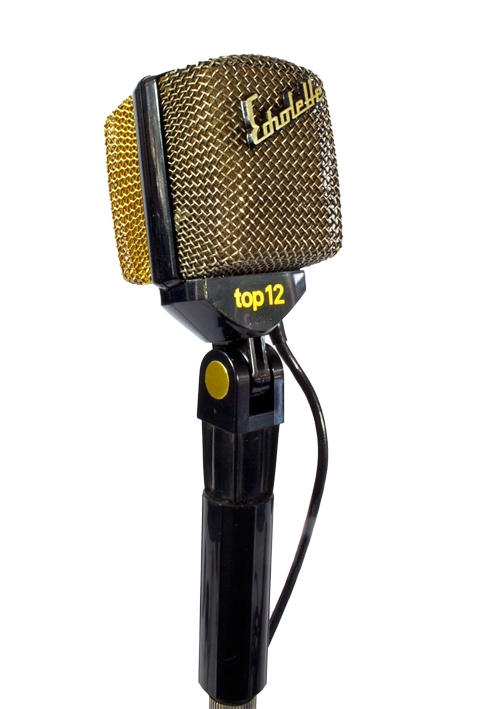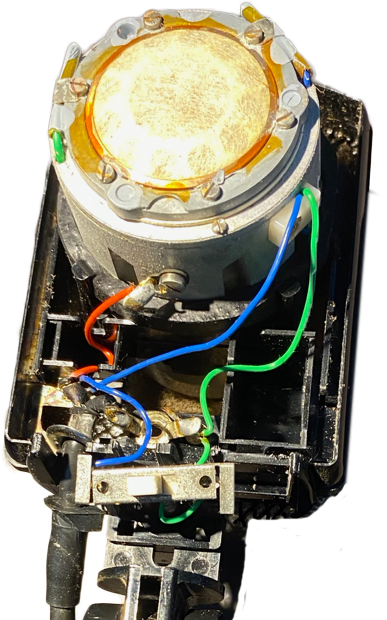|
Echolette was a German company that supplied equipment specifically aimed at one target group: performing musicians. Hans Bauer, founder of the company was himself a musician. From the end of the fifties he sold multi-channel amplifiers and loudspeakers for vocal reinforcement on stage.
The equipment was made by Klemt, a Munich firm. That same company also supplied the tape echoes, which are still in demand even today.
Bauer further supplemented the Echolette product range with smaller amps and combo's, and among other things, microphones; these were made by AKG, Beyer and Sennheiser, and differed in shape and design from those manufacturers' own program.
An example is this month's microphone: the Echolette Top 12, a vocal and instrument microphone, based on the well-known AKG D 12, but in an 'improved' version, and with smaller dimensions.
Echolette also had its 'own' D 12: the ED 12 model, the Top 12 was a more luxurious version, without the internal bass chamber and without an output transformer.
The capsule had a compact rubber shock absorber, instead of the usual large steel suspension, the frequency range was wider. Probably the best D 12 capsules were selected, just like it was done for AKG's professional models: the D20/D25/D30 and D36 (the AKG D 20 was also available in a version without an output transformer). The Top 12's smaller size made it easier to see performers behind it, which was another key advantage over the standard 'brick'.
According to the Echolette ad, from 1970, the Top 12 was world famous, but I doubt that, because in that case there would probably be more used copies to be found.
Around 1970, handheld microphones for stage use became the standard and D 12s and Top 12s were used only for amplifying instruments.
Earlier there had been a predecessor of the Top 12: the Echolette ED 20; an AKG D 20 based design (with adjustable low-cut filter), without spring suspension, bass chamber and output transformer, but also without the gold-plated grill that adorned most Echolette models. The ED 20 was of the highest quality and especially intended for the studio, it cost no less than DM 460 in 1962, the 'normal' ED 12 was much cheaper: DM 286.
The AKG D14 resembles the Top 12, but was much flatter and had a simple element. Echolette also had a version of this: the Top 14, intended for backing vocals and instruments.
Sometimes people confuse these types with the Top 12, but there are more differences than similarities.
In 1969 Echolette merges with competitor Dynacord, Bauer gets 50% of the shares. From 1981, all products were sold under the Dynacord, in a move to rationalize and keep up with competition from abroad, as a result the Echolette brand disappeared.
Many more types feature in my book Witnesses of Words. More information about that can be found at www.witnessesofwords.com
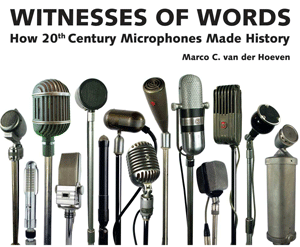
|
|
|
|
|
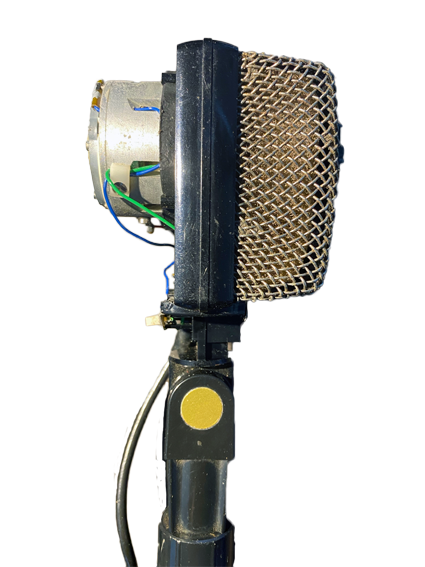
|
Top: Echolette Top 12 with special plug-in handle
Middle: open Top 12 showing capsule and suspension
Below: Sound, UK 1970 ad, 70 mic program, and
ED 12 ad from 1962 |
|
|
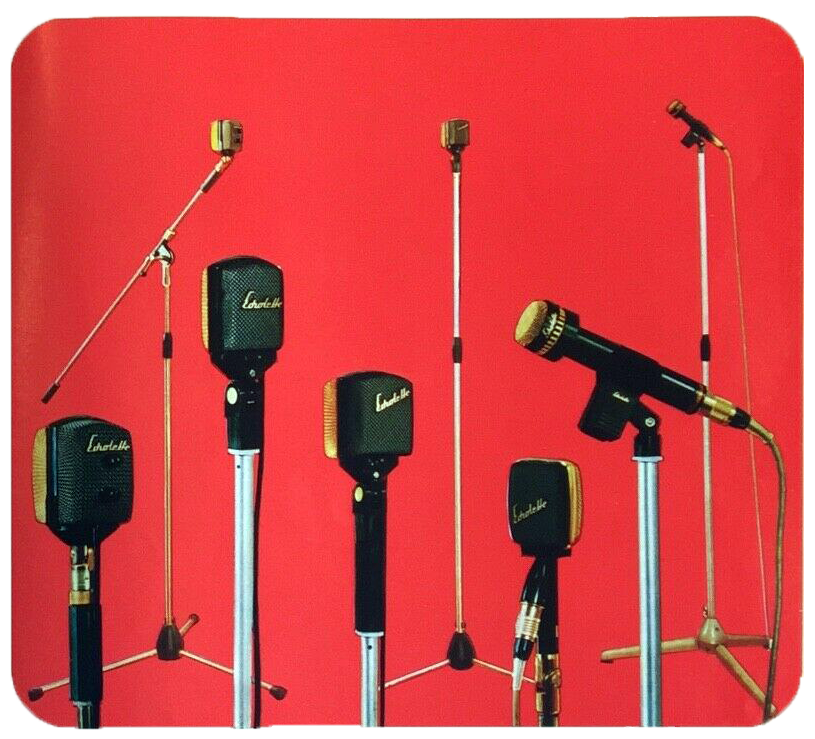 |
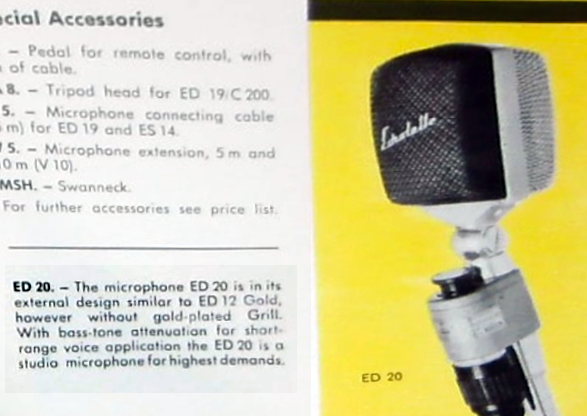 |
|

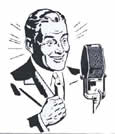
 Video's
Video's Contact
Contact


